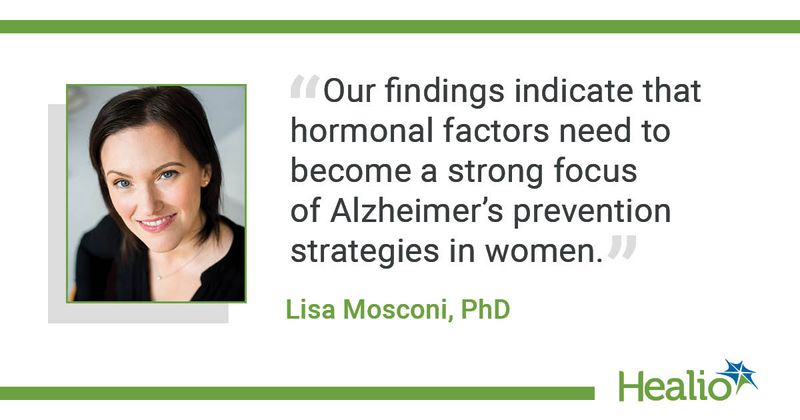Alzheimer’s prevalence in women may be due to hormonal changes
Click Here to Manage Email Alerts
The increased prevalence of Alzheimer’s disease in women may be due to hormonal changes that occur during menopause, according to a study published in Neurology, the medical journal of the American Academy of Neurology.
“For a long time, the general mindset was that women lived longer than men, and Alzheimer's was a disease of old age, and that was why the prevalence was higher in women,” Lisa Mosconi, PhD, director of the Women’s Brain Initiative and associate director of the Alzheimer’s Prevention Clinic at Weill Cornell Medicine, told Healio Primary Care.

“In this study, we show for the first time that women develop Alzheimer's-related changes in their brains at a younger age than men,” Mosconi explained. “So, it isn't just that women live longer — women also start showing the telltale signs of Alzheimer's earlier in life. Even more specifically, this seems to happen during the transition to menopause, which is in our 40's and 50's.”
Mosconi and colleagues evaluated 85 women and 36 men aged 40 to 65 years using clinical, laboratory, neuropsychological and lifestyle examinations, along with MRI, PET scans and other types of brain imaging. They assessed results in women and men in four areas of brain health — gray matter volume, white matter volume, amyloid-beta plaque levels and the rate at which their brains metabolized glucose — to compare their risks for having these Alzheimer’s biomarkers.
Researchers determined that compared with men, women had worse scores for all four brain health measures.
Specifically, women had 30% more amyloid-beta plaques and 22% lower glucose metabolism. Mosconi and colleagues also found that the women’s average gray matter volume (0.73 cm3) was 11% lower compared with men (0.8 cm3). Similarly, they determined that women’s average white matter volume (0.74 cm3) was 11% lower compared with that of men (0.82 cm3).
In a regression analysis, the researchers found that menopause transition was the strongest predictor of the observed brain abnormalities.
“Usually, when we discuss Alzheimer's prevention, we talk about managing things like high cholesterol and high blood pressure,” Mosconi explained. “We don't talk about managing menopause, or female hormones. Our findings indicate that hormonal factors need to become a strong focus of Alzheimer's prevention strategies in women.”
